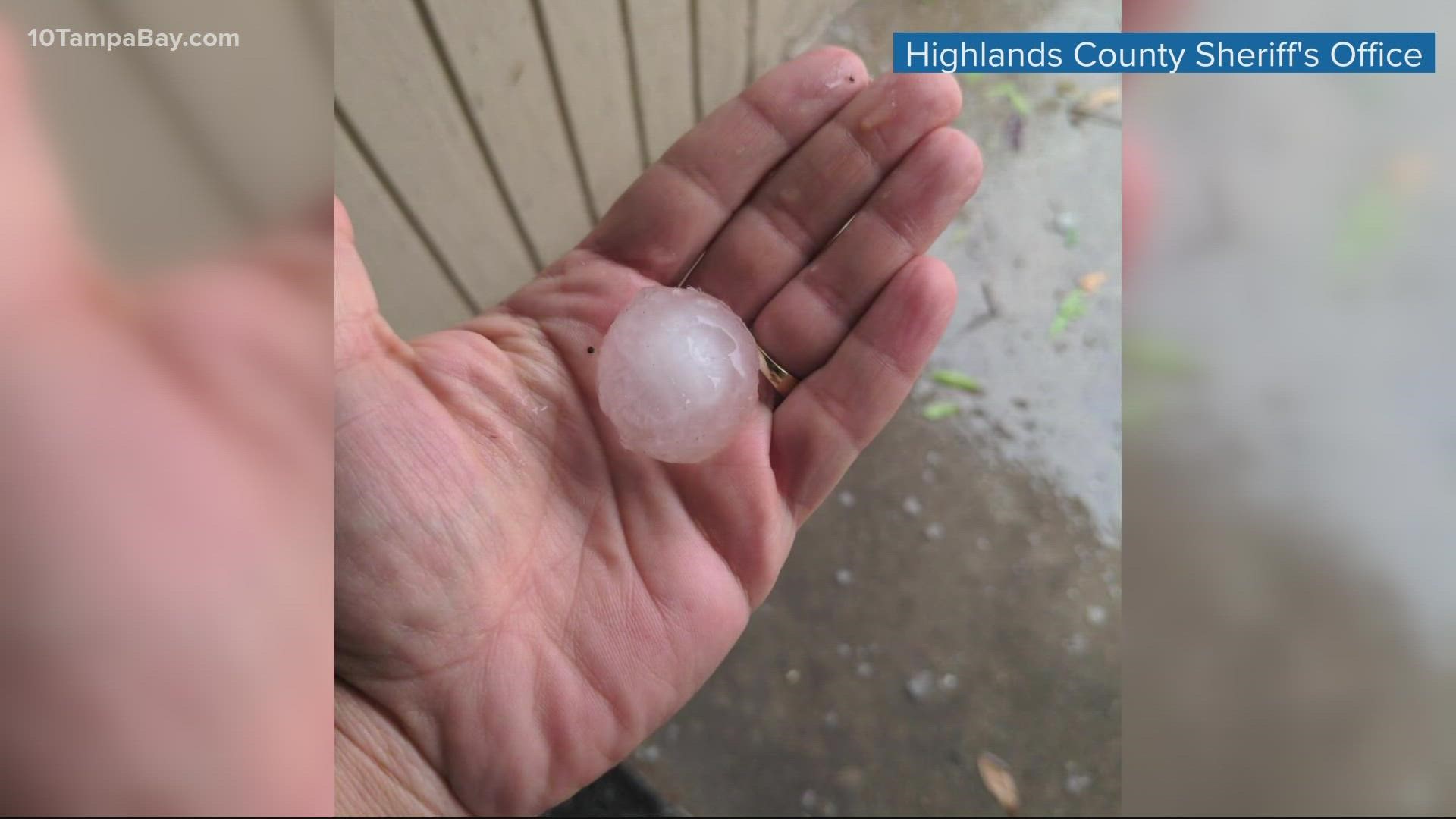TAMPA, Fla. — Recent severe thunderstorms have brought some large hail across the Tampa Bay area, all while temperatures have remained well into the 80s.
So, how does ice fall from the sky on a hot Florida day?
It all has to do with the updrafts inside a thunderstorm.
As NOAA explains, hail forms when those updrafts carry the storm's raindrops up to the freezing areas of the atmosphere. That's where they freeze into a hailstone and grow as more water droplets freeze onto them.
The stronger the storm, the more this process is repeated and thus, the larger the hailstone. Hailstones fall to the ground when their weight and the force of gravity become stronger than the storm's updraft.
Despite Florida being the state with the most thunderstorms, we don't have as many hail storms as states like Nebraska, Colorado and Wyoming. That's because the freezing level of the atmosphere is often too high here to support large hail formation, but it can still happen when strong storms come through.
NOAA estimates hail size by comparing hailstones to common objects. Here are the agency's guidelines.
- Pea = 1/4 inch diameter
- Mothball = 1/2 inch diameter
- Penny = 3/4 inch diameter
- Nickel = 7/8 inch
- Quarter = 1 inch — hail quarter size or larger is considered severe
- Ping-Pong Ball = 1 1/2 inch
- Golf Ball = 1 3/4 inches
- Tennis Ball = 2 1/2 inches
- Baseball = 2 3/4 inches
- Teacup = 3 inches
- Softball = 4 inches
- Grapefruit = 4 1/2 inches
First Coast News' Robert Speta contributed to this report.

